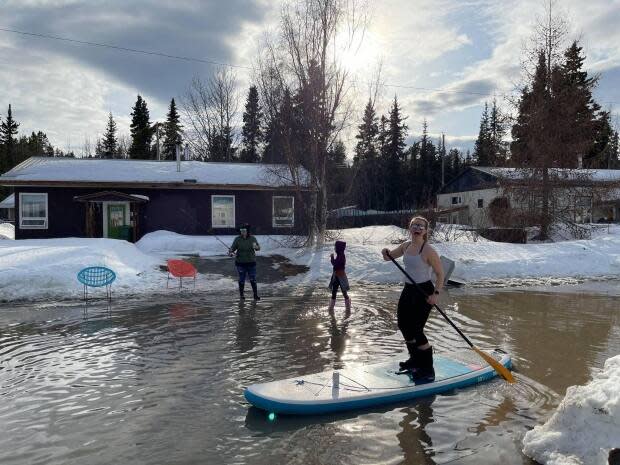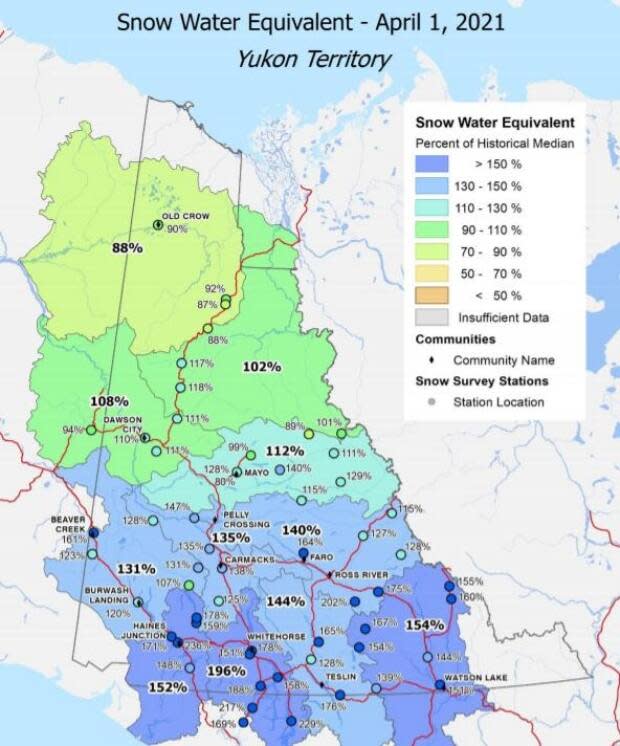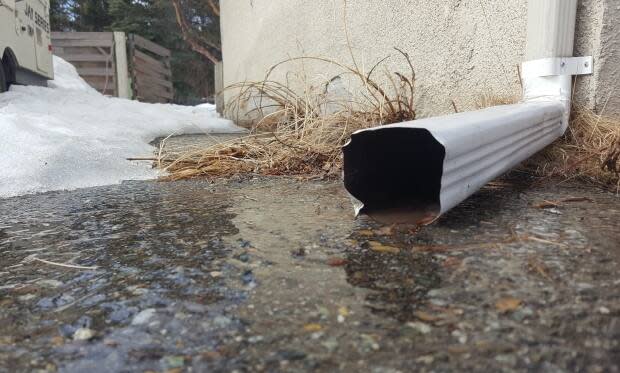Yukon emergency officials brace for possible spring floods

Yukon emergency officials are taking stock of their supplies of sandbags, water dams and other things they might need to deal with possible flooding and high water in the territory.
Southern Yukon saw an unusually high amount of snowfall through the winter and early spring. And with warmer weather in recent days, the massive melt is underway.
Kevin Lyslo, with the Yukon Emergency Measures Organization, admits to "a little bit of concern this year."
"As we're connecting with our stakeholders, we're gathering our information and as it gets closer and more melt is beginning, we're starting to get more and more accurate data," he said.
Officials are looking at areas that are most at risk right now. Lyslo says they're gathering and preparing things they might need to send to troublesome spots, such as sandbags.
"We're lining up technical experts before we're actually having events, to come and assist with, 'OK, we need to do sandbagging this high, this long, and this area,'" he said.
"This weather that's hit us this week, you know, it's about normal — but it's come kind of fast. So it's got us paying quite close attention to what things are taking place out there."
Southern Lakes area is focus of concern
The biggest concern right now, Lyslo says, is the Southern Lakes area.
Every spring, Yukon's water resources branch issues a monthly bulletin about the snow pack around the territory. The most recent one, based on measurements taken in early April, show just how snowy the winter was in southern Yukon.

Around Whitehorse, the snow-water equivalent on April 1 was about 196 per cent the historical median for the area.
"This is the highest estimated basin-wide snow pack since records began in the early 1980s," said Holly Goulding, a senior hydrologist with the Yukon government.
Other areas of the southern territory had snow pack that ranged from 131 to 154 per cent the historical average.
Further north, around the Klondike region, the snow pack is closer to normal this spring. Still further north, around Old Crow, it's actually below normal.
Goulding says the April snow bulletin typically represents the peak snow pack for the year, before the spring melt.
And she says the risk of flooding each year doesn't just depend on how much snow is on the ground.
"The timing and severity of temperature and rainfall patterns are really important drivers of flooding, regardless of snow pack levels," she said.
"And so really, the weather conditions in the coming weeks will determine the most probable spring scenarios for both freshet and break up."

Lyslo says the hope is a melt the happens "not too fast, not too slow."
"Rain is probably our biggest threat right now. I think if it got too wet too fast, that's not a good thing. We also don't want the snow to stay around and linger too far into the spring and into the summer," he said.
"So it's kind of a happy medium is what we're hoping for right now."
He's advising residents to take their own precautions against flood risk to their homes — for example, by shovelling snow away from the base of a house.
And Lyslo says people should always be prepared for any kind of emergency, with a 72-hour supply kit ready at hand.

 Yahoo Movies
Yahoo Movies 